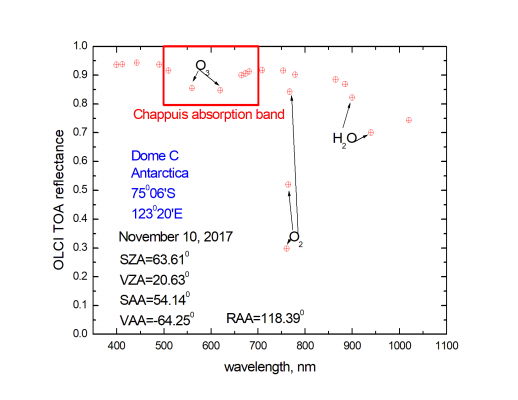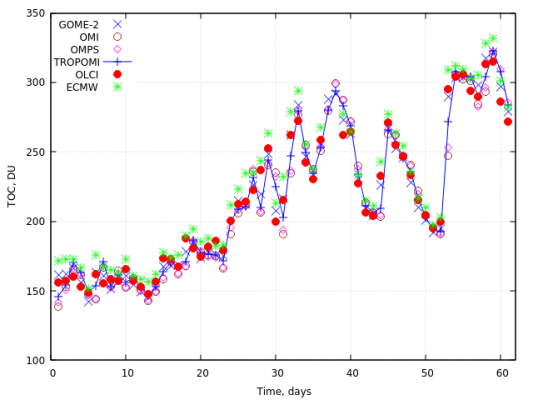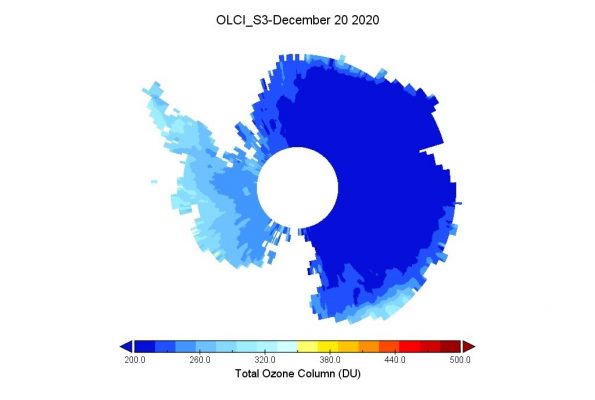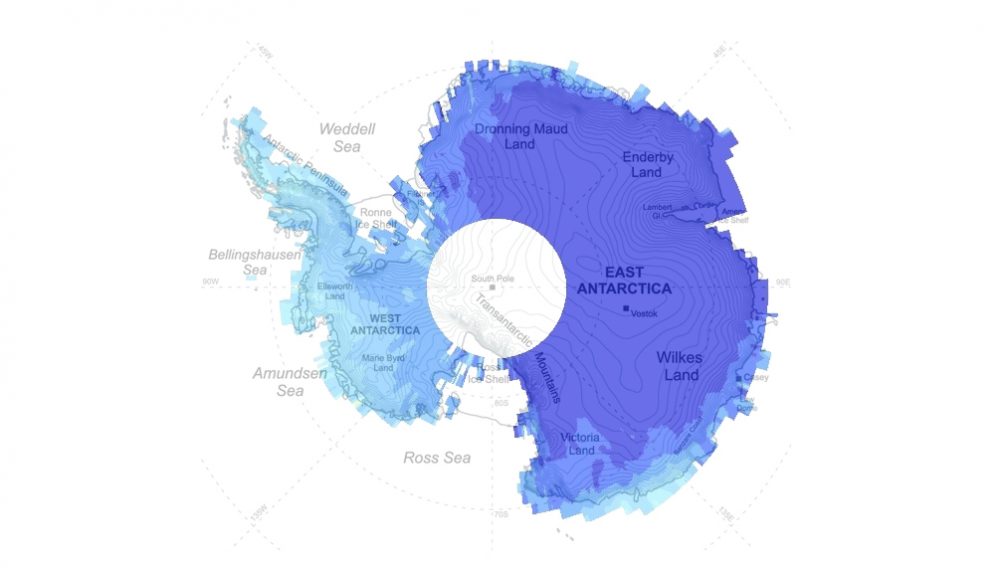The thin ozone layer positioned in stratosphere is crucial for the survival of life on Earth.
This stratospheric ozone layer shields the Earth from most of the Sun’s harmful ultraviolet radiation. In the late 1970s, scientists found out that humanity was creating a hole in this protective ozone shield. In 1985, the Vienna Convention for the Protection of the Ozone Layer has been adopted.
Currently, the ozone layer is on the way to its recovery, which is expected to occur in 40 years from now. The recovery of the ozone layer has been confirmed by both ground-based and spaceborne measurements.
A new algorithm for ozone observation, exploiting the Chappuis absorption band
A group of scientists at Vitrociset Belgium (now a TELESPAZIO company), led by Alexander Kokhanovsky, has developed a novel algorithm for the determination of the total ozone column from spectral top-of-atmosphere solar backscattered light measurements in the spectral range 400-1020 nm (as an outcome of the Pre-Operational Sentinel-3 snow and ice products (SICE) project performed by the ESA Ocean and Land Colour Instrument on board Copernicus Sentinel-3A/B.
The algorithm can be applied to scenes with bright underlying surfaces including clouds, snow and ice (e.g., over Antarctica), where the ozone absorption feature in the Chappuis absorption band is clearly seen in registered top-of-atmosphere backscattered light spectra (see Fig.1). The technique allows to perform total ozone measurements on a spatial scale of 300m, far beyond what can be reached by other modern optical measurements – aimed at total ozone observations – such as TROPOMI, OMI, GOME-2, OMPS and others.

The technique builds on MERIS total ozone observations heritage (see TORMS project) and can be applied to the spaceborne limb observations ( e.g., SCIAMACHY/ENVISAT), making it possible to derive not only total ozone but also the ozone vertical profile in stratosphere based on observations in the Chappuis absorption band, only slightly impacted by the atmospheric temperature profile. The method can be also applied to data from other moderate spectral resolution instrumentation such as MODIS, S-GLI and VIIRS.
Coherent total ozone results across sensors and methods
The inter-comparison of L3 1deg total ozone products from various satellite sensors (including new OLCI total ozone product) and ECMWF re-analysis in the vicinity of Dome C (Antarctica, November-December 2020) is visible in Fig.2. It shows the similarity of total ozone temporal variations derived from various sources.
The ozone hole, clearly visible in November, disappears after several oscillations at the end of December due to an increase in the stratospheric temperature.

A recovering ozone hole with oscillations
The 2019 Antarctic ozone hole was the smallest on the record (since 1982). However, persistent cold temperatures and strong circumpolar winds supported the formation of a large and deep Antarctic ozone hole in 2020, which had its maximum in September 2020, and disappeared in the last days of December as reported by NASA Earth observatory (https: earthobservatory.nasa.gov), which is consistent with data shown in Fig.2. The OLCI total ozone over whole Antarctica is shown in Fig.3.

Results reported in this story are the outcome of the AnREO project.

